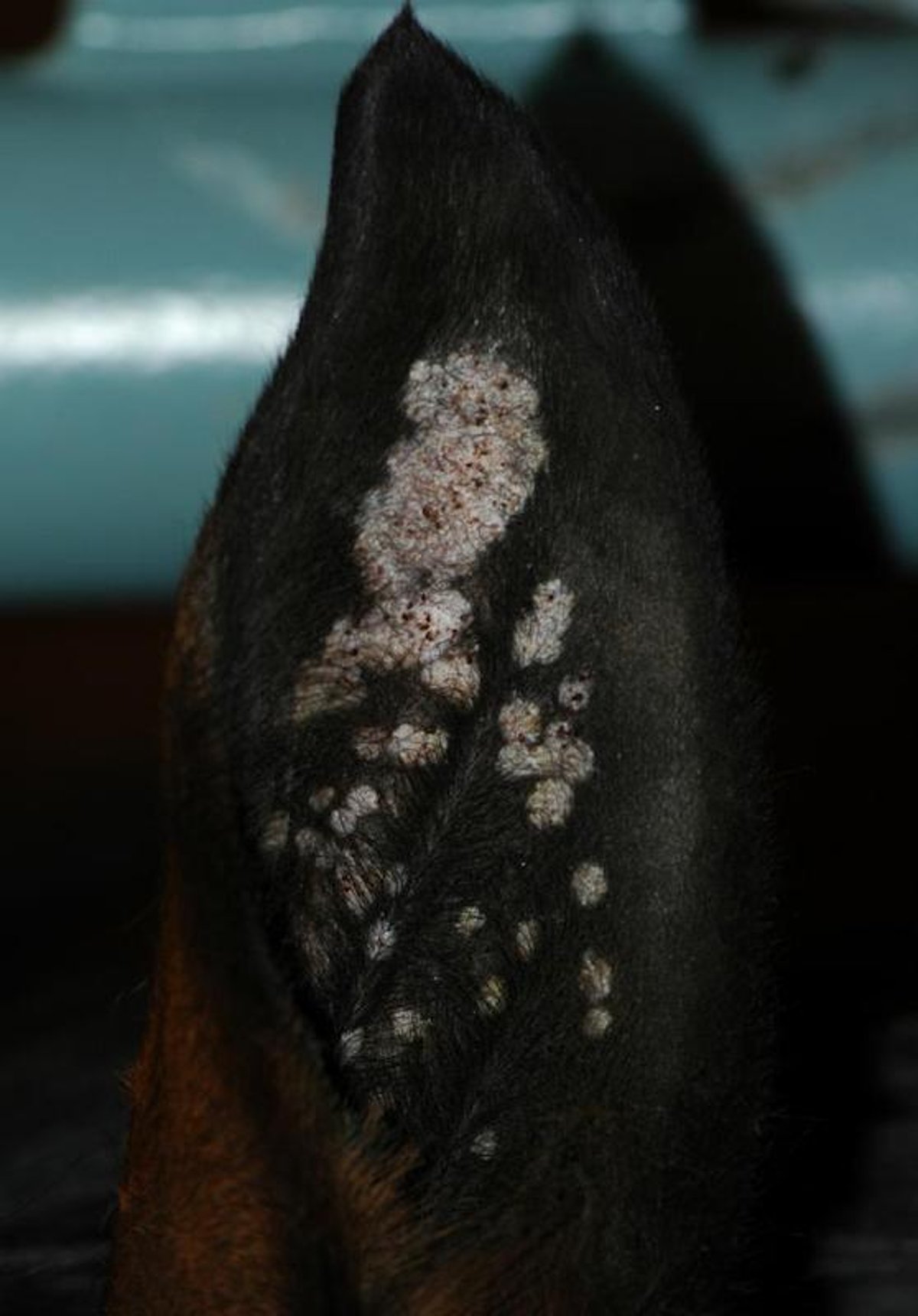Courtesy of Dr. Sheila Torres.
Courtesy of Dr. Sheila Torres.
Equine aural plaques, also known as papillary acanthoma or ear papillomas, are caused by papillomavirus. Currently, four papillomaviruses have been isolated from aural plaques. Black flies (Simulium spp) are likely the mechanical vector. The flies are active at dawn and dusk, when they attack the head, ears, and ventral abdomen of horses.
Clinically, lesions are characterized by depigmented, hyperkeratotic, coalescing papules and plaques localized to the concave aspect of the pinna. Often, both pinnae are affected. Lesions are usually asymptomatic, but in some cases the fly bite itself causes dermatitis and discomfort. Histologically, the lesions are characterized by mild, papillated epidermal hyperplasia and marked hyperkeratosis. Increased size of keratohyalin granules, koilocytosis, and hypomelanosis may also be present in the epidermis. Intranuclear viral particles have been seen in electron microscope studies.
Various treatments have been anecdotally tried, with minimal to no response. A recent, open-label pilot study showed that imiquimod cream is effective in the treatment of aural plaques; however, the severe inflammation induced by the drug makes this treatment difficult to use, with most horses requiring sedation. The recommended protocol consists of applying imiquimod 2–3 times weekly (nonconsecutive days) every other week. Frequent applications of fly repellent and stabling the horse during the fly’s feeding times are important measures to reduce discomfort and prevent recurrence. Lesions typically do not regress spontaneously.
For More Information
Also see pet health content regarding aural plaques in horses.




